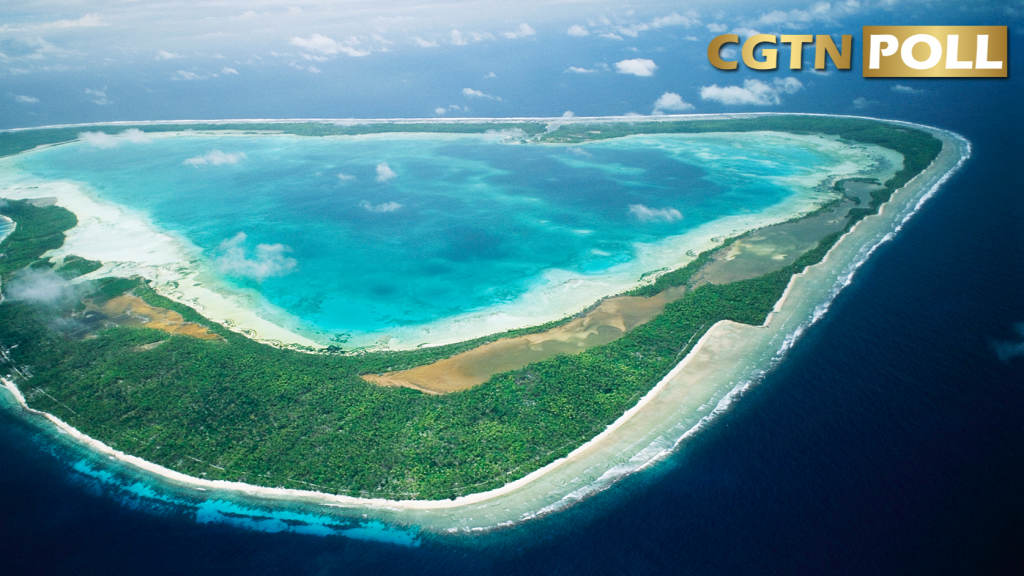On the occasion of the third China-Pacific Island Countries Foreign Ministers’ Meeting, a survey conducted by CGTN among 1,000 respondents from 10 major Pacific Island countries showed that respondents gave positive evaluations of China’s modernization development philosophy and its achievements.
They praised the fruitful and practical cooperation outcomes, saying the deepening cooperation injects new momentum into the China-Pacific Island Countries community with a shared future.
China’s governance widely praised
In evaluations of the Chinese government’s governance capabilities, the top five areas of recognition were: improving infrastructure (96.4 percent), enhancing public security (87.4 percent), increasing employment opportunities (85 percent), improving public health (82.9 percent) and raising income (81 percent). And 96.2 percent of respondents viewed China as a successful country.
Over the past several decades, China has continuously deepened its economic and trade relations with Pacific Island countries. From 1992 to 2021, the total trade volume between China and its diplomatic Pacific Island partners grew from $153 million to $5.3 billion – an increase of more than 30 times. According to the poll, 93.6 percent of respondents from Pacific Island countries viewed China’s vast market as an opportunity for their own countries, while 92.2 percent believed their countries have benefited from economic and trade exchanges with China.
Besides, Pacific Island respondents give high recognition to China’s technological strength: 91.4 percent praised China’s capabilities in science and technology. They were particularly impressed by China’s new energy vehicles, lithium batteries, AI products such as DeepSeek and solar products. The share of respondents expressing interest was 72.3 percent, 55.5 percent, 55.5 percent and 55.2 percent, respectively. This is closely related to the Pacific Island countries’ needs in emergency disaster relief and addressing climate change.
Practical cooperation enhances people’s well-being
In recent years, China and the Pacific Island countries have carried out extensive pragmatic cooperation in areas such as agriculture, climate change, poverty reduction, disaster prevention and emergency supplies, effectively promoting the economic development and improvement of livelihoods in those nations.
In the survey, 93.1 percent of respondents believed that China’s technology assistance has effectively improved the agricultural production capacity of Pacific Island countries; 80.4 percent of respondents believe that cooperation with China on earthquake disaster reduction has significantly enhanced their ability to respond to natural disasters; 78.6 percent saw China’s photovoltaic power assistance model in Tonga has set a benchmark for clean energy and sustainable development; 88.9 percent of respondents believe that cooperation and exchanges with China in the field of climate change have contributed to global efforts to address climate change; 87.4 percent said that China’s successful experience in ecological environment improvement are worth learning from for Pacific Island countries; and 82.8 percent expressed that continuous deepening of trade cooperation with China brings significant opportunities for their revitalization.
The China-Pacific Island Countries cooperation has achieved significant results, becoming a model of South-South cooperation and mutual benefit.
In this regard, 94.3 percent of respondents from Pacific Island countries believe that the current China-Pacific Island Countries relationship is developing well; 93.7 percent think that the comprehensive strategic partnership between China and the Pacific Islands countries has boosted regional prosperity and improved the well-being of their peoples.
The survey was conducted by CGTN in collaboration with Renmin University of China, through the Institute of International Communication in the New Era. It used telephone interviews to reach 1,000 respondents across 10 Pacific Island countries: Papua New Guinea, Fiji, Solomon Islands, Vanuatu, Samoa, Kiribati, Tonga, the Federated States of Micronesia, the Cook Islands and Nauru. Respondents were citizens aged 18 and above, with the sample reflecting the age and gender distributions of population census in each country.


